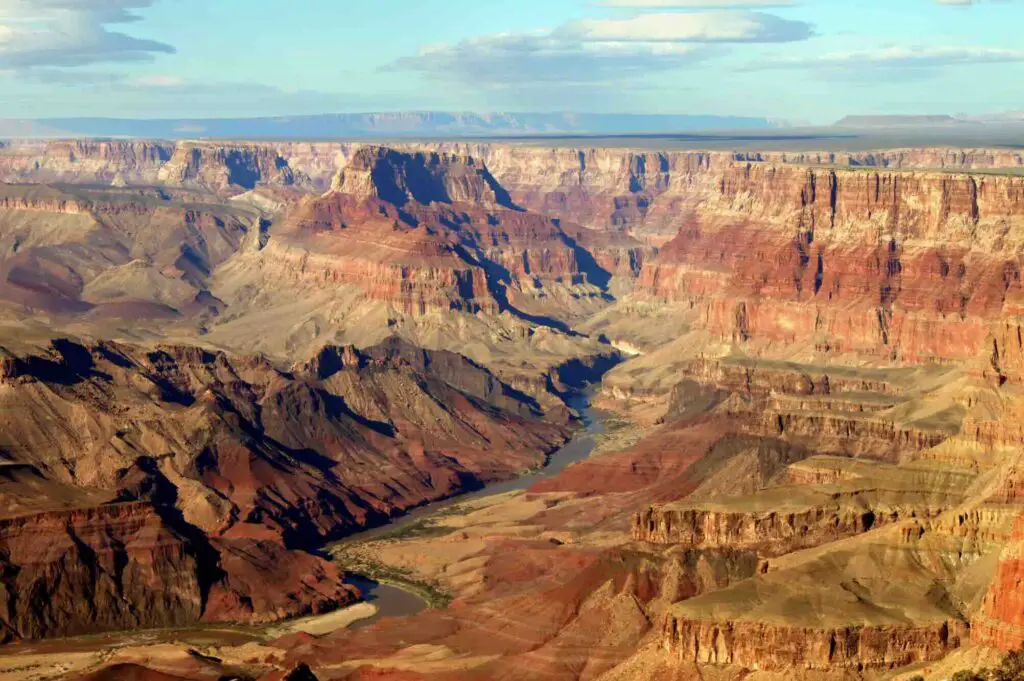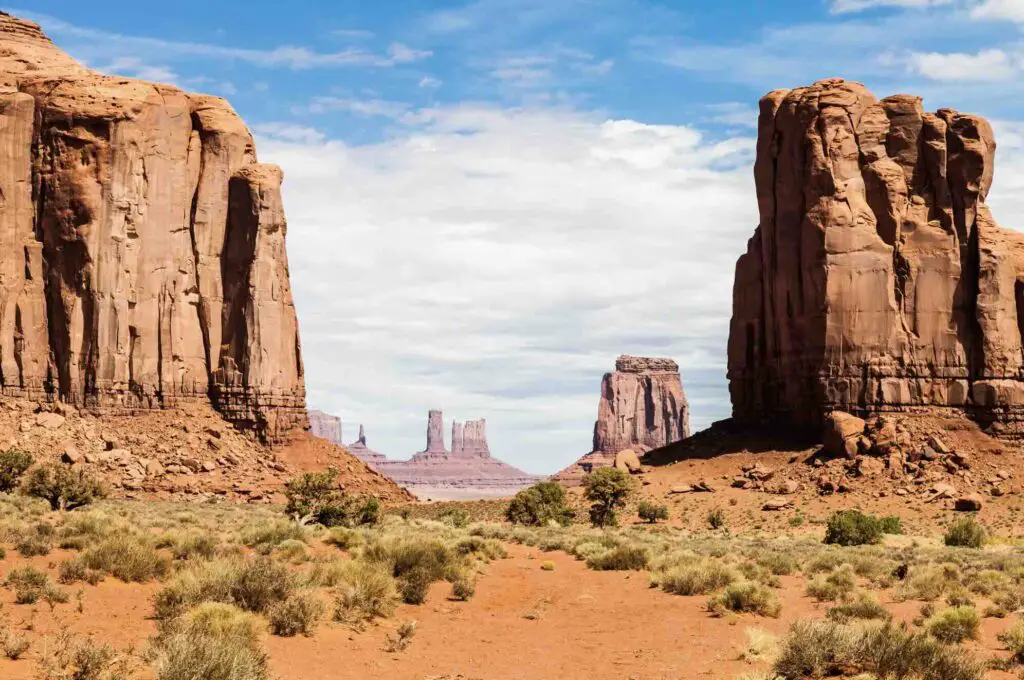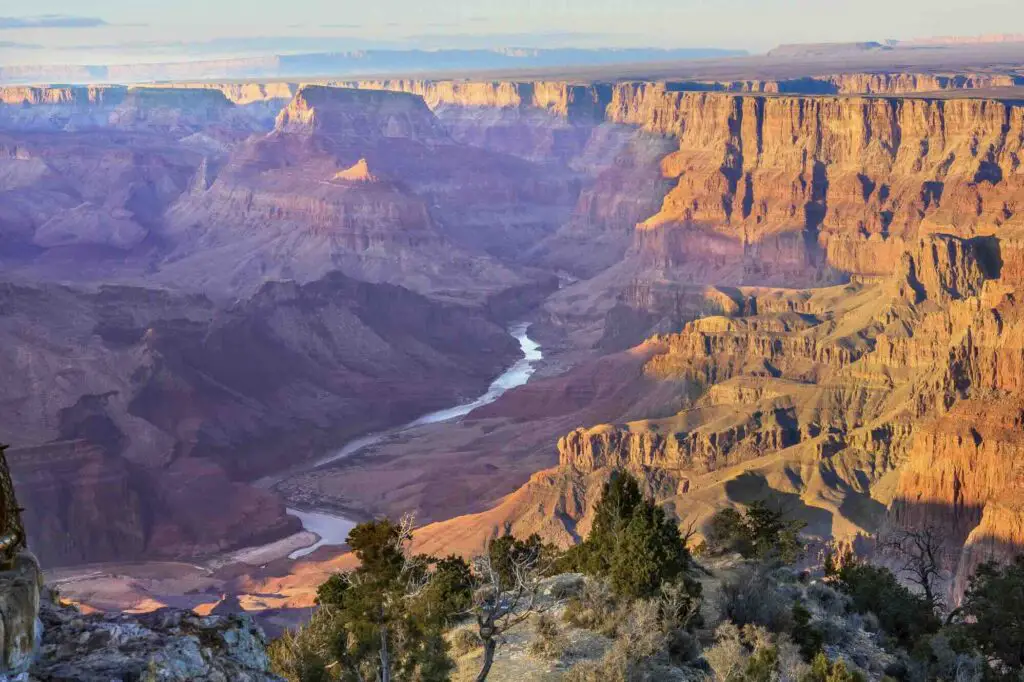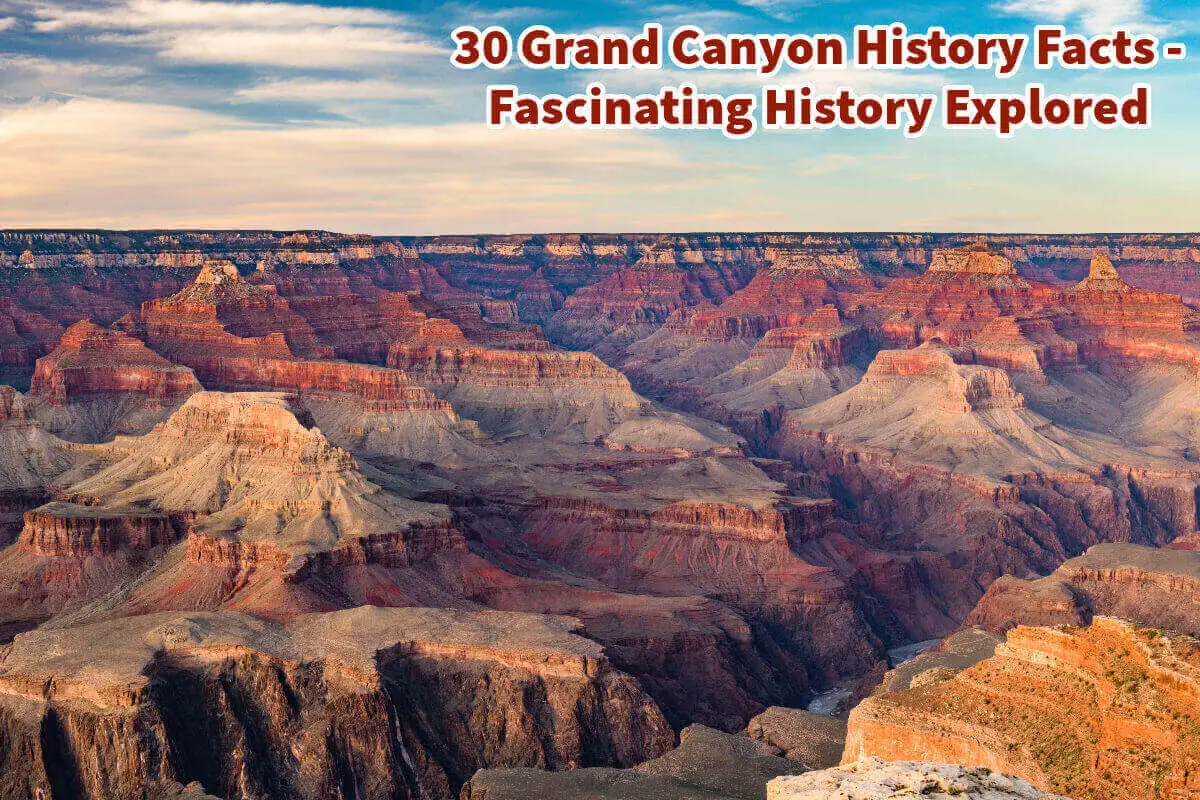Journeying to the Grand Canyon is a rewarding experience, as it remains one of the planet’s most remarkable natural spectacles. Visiting the Grand Canyon and understanding the history of the Grand Canyon is essential.
The Grand Canyon is filled with a fascinating history. That is because, emblematic of nature’s vastness and beauty, the Grand Canyon is a pinnacle of global natural wonders. Read on as we explore thirty fascinating facts about the Grand Canyon.
Table of Contents
- 30 Fascinating Facts About The Grand Canyon’s Rich History
- 1. Ancient Footprints:
- 2. Puebloan Ancestors:
- 3. Mysterious Departures:
- 4. Tribal Significance:
- 5. Spanish Exploration:
- 6. Naming The Canyon:
- 7. Mining Endeavors:
- 8. Railroad Revolution:
- 9. Becoming A National Monument:
- 10. National Park Status:
- 11. Skywalk Attraction:
- 12. Geologic Wonder:
- 13. River’s Role:
- 14. Fauna And Flora:
- 15. Ancient Art:
- 16. Historic Preservation:
- 17. The Missing Limestone:
- 18. Cultural Crossroads:
- 19. Legendary Explorers:
- 20. Mule Legacy:
- 21. Flight Over The Canyon:
- 22. Evolution Of Tourism:
- 23. Protecting The Night:
- 24. Deadly Exploration:
- 25. Kolb Brothers’ Legacy:
- 26. Evolution Of Facilities:
- 27. Legendary Landmarks:
- 28. The Tribal Park:
- 29. Role In Literature And Film:
- 30. Protection And Preservation:
- Related Questions
30 Fascinating Facts About The Grand Canyon’s Rich History
The Grand Canyon, a UNESCO World Heritage Site and one of the Seven Natural Wonders of the World is not just a geological marvel but a treasure trove of history and intriguing tales. Delve deep into these 30 historical facts about the Grand Canyon and discover more layers to its already profound legacy:

1. Ancient Footprints:
Evidence suggests that humans have inhabited the Grand Canyon region for nearly 10,000 years, with the earliest Native American inhabitants dating back to the Paleo-Indian period.
2. Puebloan Ancestors:
Around 200 B.C., the Ancestral Puebloan people, known as the Anasazi, began migrating to the Grand Canyon region, leaving remarkable architectural remnants.
3. Mysterious Departures:
Around A.D. 1100, the Ancestral Puebloans mysteriously vanished from the canyon, allowing other tribes to establish themselves in the region.
4. Tribal Significance:
The Grand Canyon is spiritual for many Native American tribes, including the Havasupai, Hualapai, Navajo, and Hopi.
5. Spanish Exploration:
The first Europeans to look at the Grand Canyon were Spanish explorers led by Hopi guides in 1540, nearly 80 years before the Pilgrims landed at Plymouth Rock.
6. Naming The Canyon:
The name “Grand Canyon” was coined in the 1870s by John Wesley Powell, an explorer who chronicled his journey down the Colorado River.
7. Mining Endeavors:
The late 19th century saw prospectors flocking to the Grand Canyon for precious metals. Remnants of mining equipment and ghost towns can still be found in the area.
8. Railroad Revolution:
In 1901, the Santa Fe Railroad reached the Grand Canyon, transforming it from a remote locale to an accessible tourist destination.
9. Becoming A National Monument:
President Theodore Roosevelt, a frequent visitor and admirer of the Grand Canyon, designated it a national monument in 1908.
10. National Park Status:
Eleven years later, in 1919, the Grand Canyon achieved National Park status, ensuring its protection and conservation for future generations.
11. Skywalk Attraction:
The Grand Canyon Skywalk, a horseshoe-shaped glass bridge, was opened in 2007, offering visitors a unique perspective suspended 4,000 feet above the canyon floor.

12. Geologic Wonder:
The Grand Canyon exposes nearly two billion years of Earth’s geological history through its extensive rock layers.
13. River’s Role:
The Colorado River, which snakes through the canyon, is primarily responsible for carving out this magnificent landscape over millions of years.
14. Fauna And Flora:
The Grand Canyon is home to over 1,500 plant species and hundreds of animal species, some unique to the area.
15. Ancient Art:
Petroglyphs and pictographs, ancient rock art left behind by Native American tribes, can be found in various locations within the canyon.
16. Historic Preservation:
Several historic landmarks, such as the El Tovar Hotel and Phantom Ranch, have been preserved and are listed on the National Register of Historic Places.
17. The Missing Limestone:
An intriguing geological mystery is the Grand Canyon Supergroup, a series of rock layers tilted and separated from the main rock layers, indicating a gap in the geological record.
18. Cultural Crossroads:
The canyon has been a crossroads for various Native American cultures, as evident from the different architectural styles, pottery, and artifacts discovered.
19. Legendary Explorers:
John Wesley Powell’s 1869 expedition was a European American’s first recorded journey through the Grand Canyon.
20. Mule Legacy:
Mule rides, a popular way to explore the Grand Canyon, have been a tradition for over a century.
21. Flight Over The Canyon:
In 1956, a mid-air collision over the Grand Canyon led to significant changes in flight regulations and air traffic control in the U.S.

22. Evolution Of Tourism:
Initially accessed only by adventurous explorers, the Grand Canyon now welcomes over six million visitors annually.
23. Protecting The Night:
The Grand Canyon was designated a Dark Sky Park in 2019, highlighting efforts to reduce light pollution and ensure stellar stargazing opportunities.
24. Deadly Exploration:
Despite its beauty, the Grand Canyon has claimed numerous lives, from early explorers to modern-day tourists, due to its rugged terrain and the unpredictable nature of the Colorado River.
25. Kolb Brothers’ Legacy:
Ellsworth and Emery Kolb, pioneering photographers, documented the Grand Canyon in the early 20th century, leaving behind a priceless visual legacy.
26. Evolution Of Facilities:
From primitive camps to grand lodges, the amenities at the Grand Canyon have evolved over the years to cater to the increasing number of tourists while preserving the natural beauty and essence of the park.
27. Legendary Landmarks:
The Desert View Watchtower, designed by the renowned architect Mary Colter in 1932, is one of the many iconic landmarks within the Grand Canyon, offering panoramic views of the vast expanse.
28. The Tribal Park:
The eastern part of the Grand Canyon, known as the Little Colorado River Tribal Park, is governed by the Navajo Nation and showcases a confluence of natural beauty and rich Native American heritage.
29. Role In Literature And Film:
The Grand Canyon has inspired countless poets, writers, and filmmakers. It has featured in numerous literary works and has been the backdrop for various films, underscoring its enduring allure.
30. Protection And Preservation:
Efforts to protect the Grand Canyon are continuous, with the National Park Service, Native American tribes, and numerous conservation groups working to ensure this magnificent wonder remains unspoiled for future generations.
The Grand Canyon is not just a marvel; it’s a canvas painted with history, culture, geology, and human endeavors. These facts offer a glimpse into the rich tapestry that makes up the Grand Canyon’s legacy.
Whether you’re an adventurer, a historian, or someone seeking solace in nature’s grandeur, the Grand Canyon has stories and wonders waiting for you.
At A Bus On A Dusty Road, we talk about travel, life, and ex-pat living. We are all about “Living Life As A Global Citizen.” We explore social, cultural, and economic issues and travel.
We would love to have you be part of our community. Sign up for our newsletter to keep up-to-date by clicking here. If you have any questions, you can contact me, Anita, by clicking here.
Listen to our Podcast called Dusty Roads. You can find it on all major podcast platforms. Try out listening to one of our podcasts by clicking here.
Subscribe to our A Bus On A Dusty Road YouTube Channel with great videos and information by clicking here.
Related Questions
Is A Day Trip To The Grand Canyon Worth It?
If you only have one day to visit the Grand Canyon, it is still worth visiting. You can do things to prepare for your trip so that you will have the most time available. We recommend you go to see the South Rim area of the Canyon.
By clicking here, you can discover Is A Day Trip To The Grand Canyon Worth It?.
How Much Time Should We Plan To Spend At The Grand Canyon?
The Grand Canyon was once filled with water, but the Grand Canyon itself is at least 6 million years old. The rock and rock formations of the Grand Canyon help us to tell the story of this magnificent place on earth.
By clicking here, you can discover How Much Time Should We Plan To Spend At The Grand Canyon?.
Was The Grand Canyon Once Totally Filled With Water? & More
The Grand Canyon was once filled with water, but the Grand Canyon itself is at least 6 million years old. The rock and rock formations of the Grand Canyon help us to tell the story of this magnificent place on earth.
By clicking here, you can discover Was The Grand Canyon Once Totally Filled With Water? & More.

